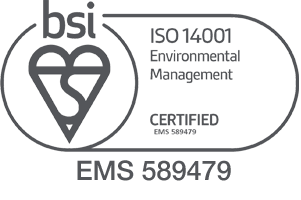


20/07/2021
Why is a hospital evacuation plan important?
To prepare for the worst-case scenario, hospitals need an evacuation plan that ensures patients and casualties can be moved quickly and efficiently, with the infrastructure and equipment in place to minimise risk and suffering.
Evacuation of hospitals are thankfully rare, but nevertheless, sometimes situations occur that require a ward or entire hospital to be evacuated, including floods, fires, and utility failures. To prepare for the worst-case scenario, hospitals need an evacuation plan that ensures patients and casualties can be moved quickly and efficiently, with the infrastructure and equipment in place to minimise risk and suffering.
What Is An Evacuation Plan?
Evacuating a hospital is a hugely complex and difficult task and is often seen as “too difficult to carry out effectively”. Understandably, when the size and complexity of a hospital is taken into account, and the different needs of patients and staff are considered, it can be incredibly difficult to know where to begin.
However, with a well-thought-out plan, supported with equipment and training such as our Smart Evacuation system, you can facilitate an evacuation which can be implemented to a high standard.
There are a number of critical questions every hospital evacuation plan should answer:
- Will it ensure that a continuous level of care is delivered throughout the evacuation?
- Does it maximise the use of existing clinical assessment tools?
- Is the equipment for evacuation embedded appropriately throughout the facility?
- Is terminology uniform throughout the facility during an evacuation?
- Can it be implemented with ease throughout your organisation without key personnel in place?
- Will it allow for effective audit post incident?
- Is training designed to produce competent end-users in all areas of the evacuation?
How To Formulate A Hospital Evacuation Plan
A hospital evacuation plan can involve a series of concurrent evacuations from different wards and areas of the hospital, with resources organised according to a hierarchy of needs to address the specific evacuation problems encountered by your hospital.
The first stage is to determine what your aims are in the evacuation plan, which ultimately, are to move all patients away from danger as quickly and efficiently as possible, while sustaining the highest level of patient care. The plan must include safeguards to ensure that the best level of care continues to be delivered to patients during the evacuation.
This simple premise then guides all management and logistical decisions throughout the plan, so that evacuation managers never lose sight of the needs of vulnerable patients. For each patient or class of patients, the following triage considerations are necessary:
- How time critical is the patient’s evacuation?
- What is the best facility to evacuate them to, is it on-site or off-site?
- How mobile is the patient, and what resources are necessary to help them evacuate the premises safely continuing appropriate care?
- What ongoing medical care does the patient require throughout evacuation, and what is the equipment necessary to achieve this?
- What training is necessary to empower staff to deliver the best standards of care throughout the evacuation process?
Supporting Staff During A Hospital Evacuation
A hospital evacuation plan should encompass not only the needs of patients, but also the safety of staff, and the roles each are expected to play in a partial or full evacuation. A risk assessment should identify the vulnerabilities and needs of colleagues and accommodate various scenarios in which different actions are required.
Most hospital staff faced with a live evacuation will not have had to respond to a disaster before. Therefore, the right training and equipment should be put in place beforehand to enable a calm and professional response during the emergency, making use of familiar clinical assessment tools and procedures used on a day-to-day basis. People in disaster-response situations always perform more effectively when using familiar technology, terminology, and procedures.
Ongoing training in evacuation response and management is essential to deliver the best results if the worst happens, so whatever training is required, it should be simple to implement, relevant to the staff member’s specific role, and capable of being repeated on a regular basis.
Smart Evacuation From TSG Associates LLP
Our Smart Evacuation System is a practical solution for hospitals, delivering a bespoke package of equipment, triage, and competency training to assist your staff and deliver an effective evacuation that meets the needs of your patients. To find out more, or to discuss your evacuation plan with one of our specialists, please get in touch today.
Image source: Pixabay







